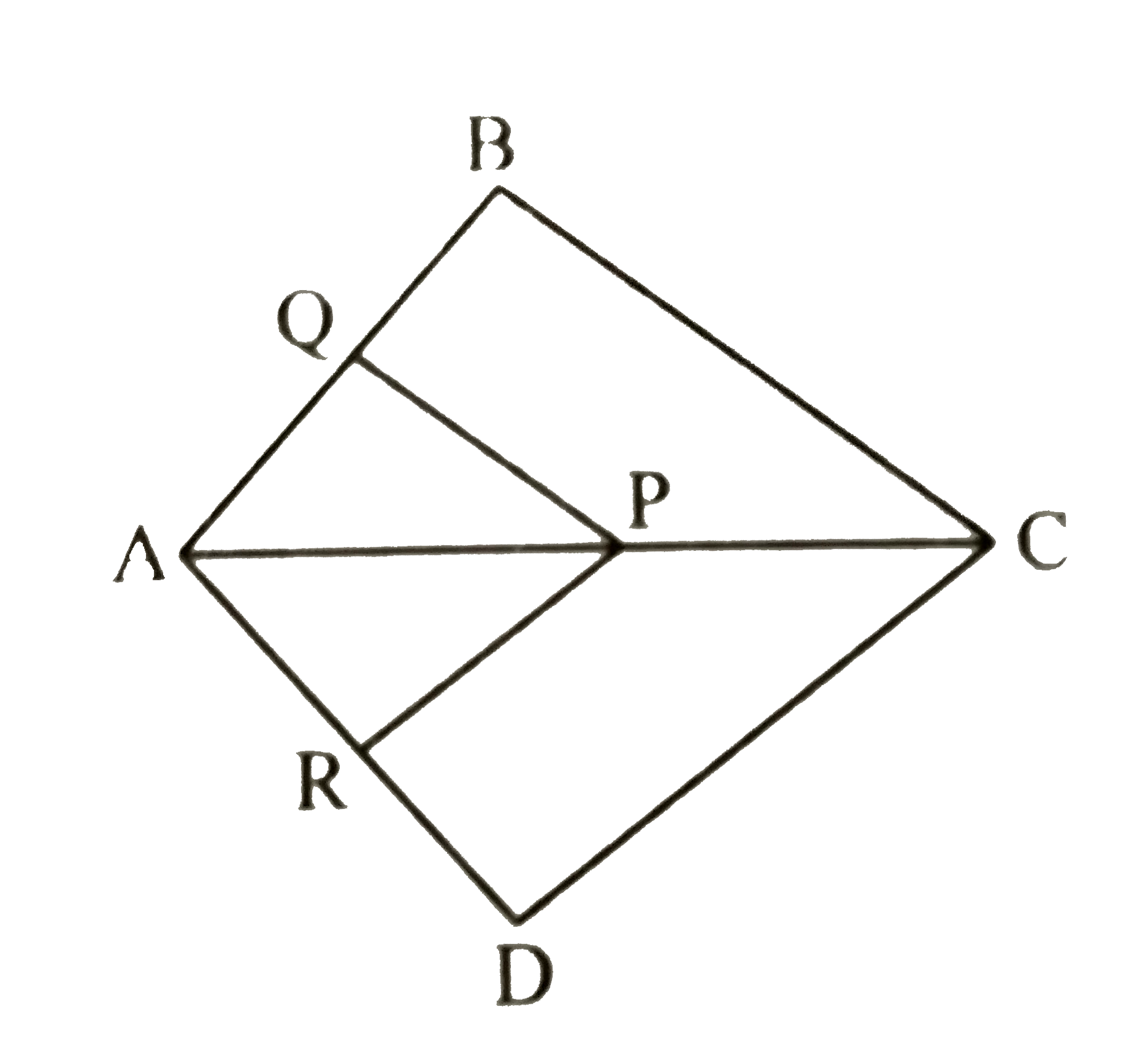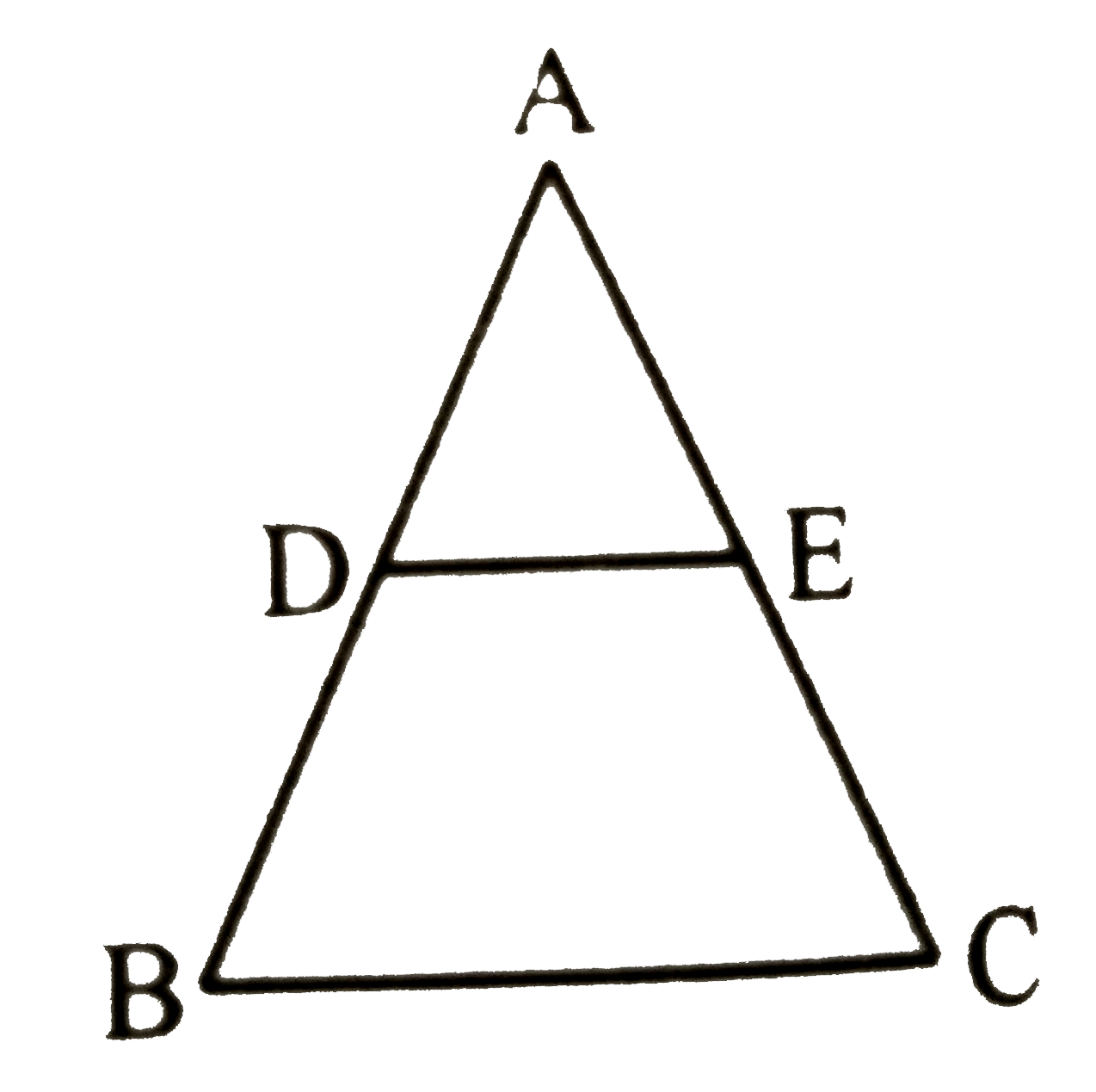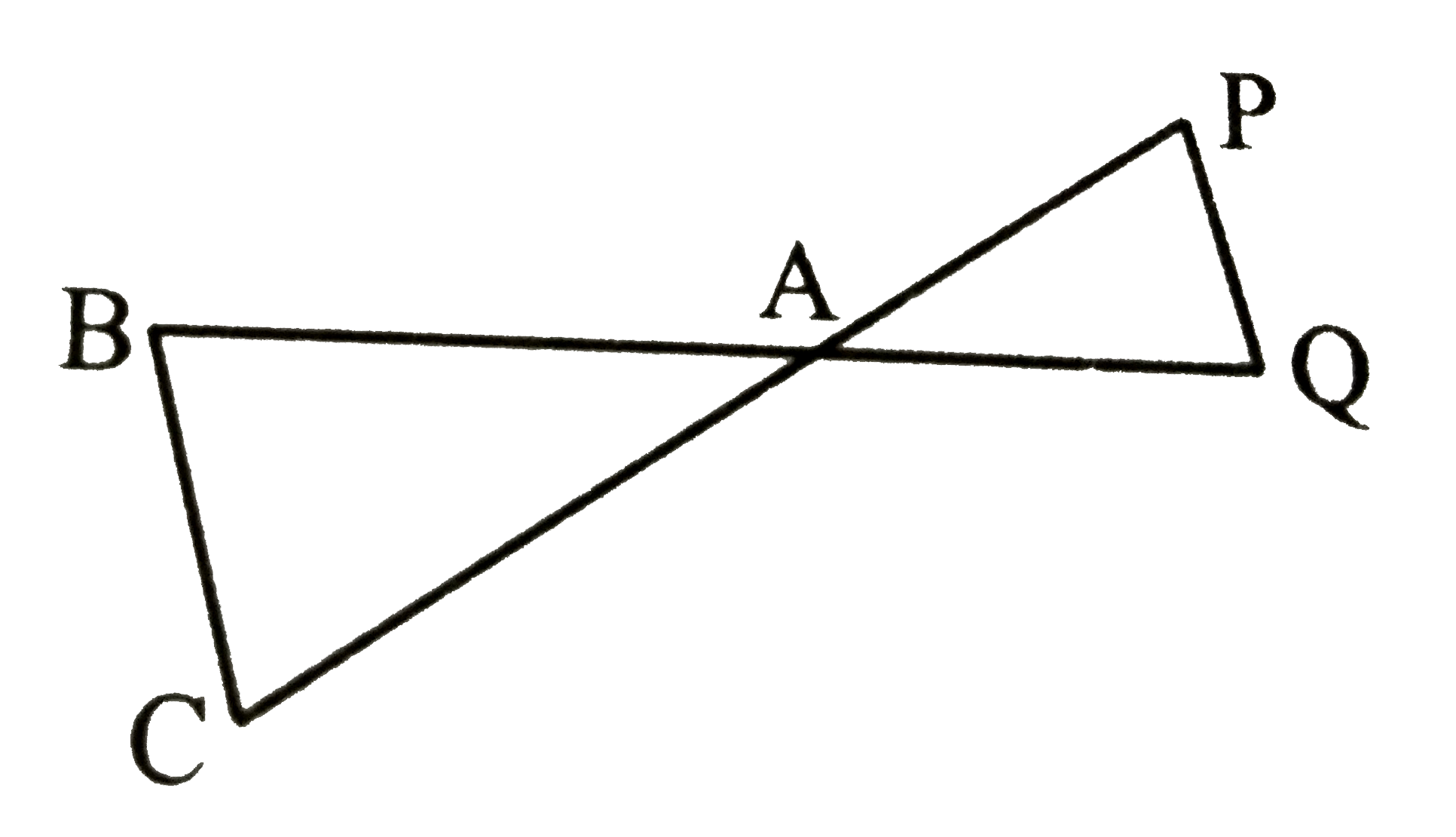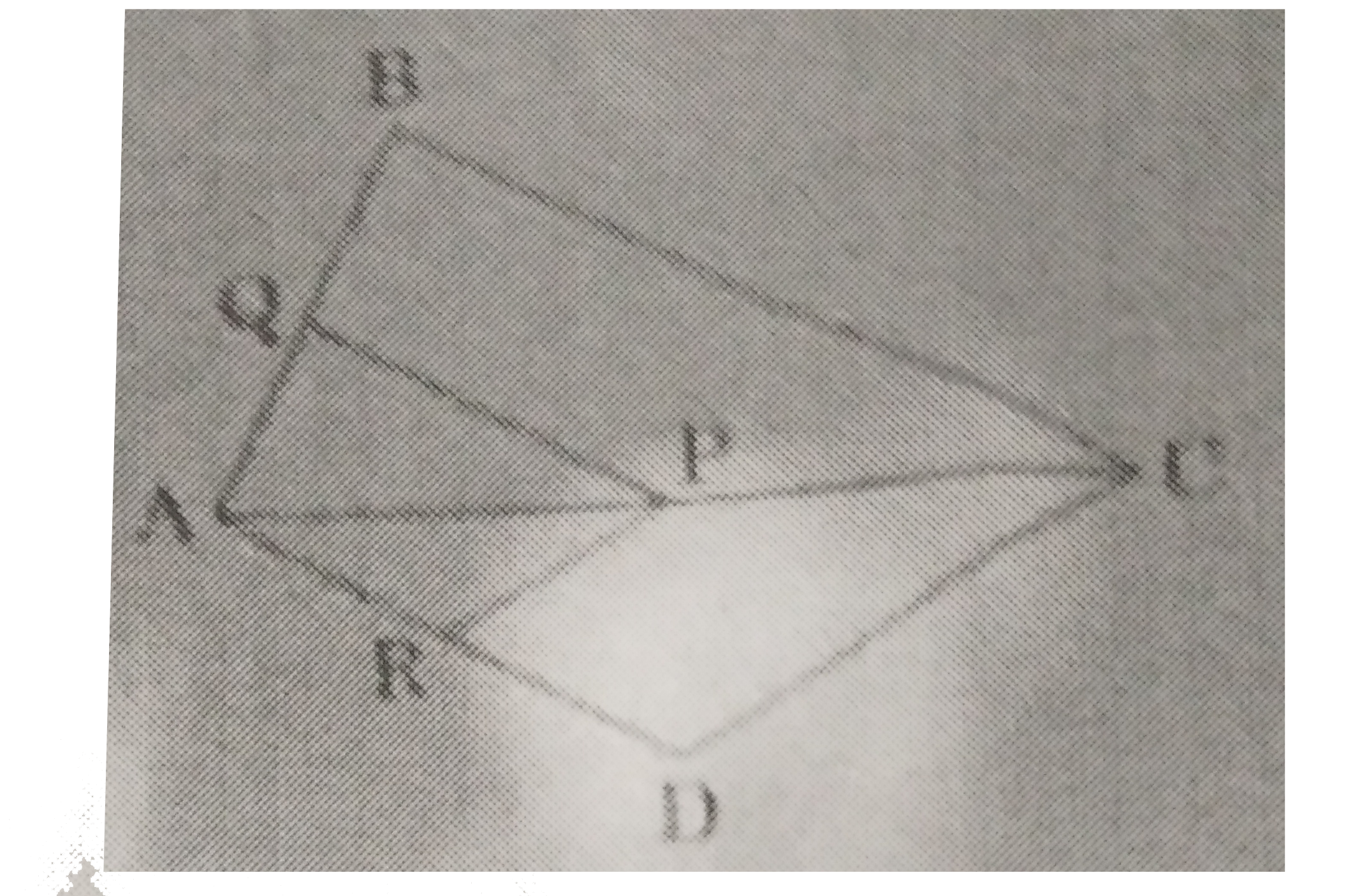दी गई आकृति में PQ।।BC तथा PR।।CD है । तो सिद्ध कीजिए कि
(i) ARAD=AQAB
(ii) QBAQ=DRAR

दिया है,
△ABC में, PQ।।BC
तब, आधारभूत समानुपातिकता प्रमेय से,
AQAB=APAC ...(1)
अब △ACD में , PR।।CD
तब पुनः आधारभूत समानुपातिकता प्रमेय से,
APAC=ARAD
समी० (1) व (2) से , AQAB=ARAD या ARAD=AQAB
(ii) समी० (1) से, ⋅AQAB=ARAD
⇒ABAQ=ADAR
⇒AQ+QBAQ=AR+RDAR
⇒1+QBAQ=1+RDAR⇒QBAQ=DRAR
Topper's Solved these Questions
- BOOK - BALAJI PUBLICATIONCHAPTER - त्रिभुज EXERCISE - अभ्यास प्रश्न 7.19videos
त्रिभुज
- BOOK - BALAJI PUBLICATIONCHAPTER - त्रिभुज EXERCISE - अभ्यास प्रश्न 7.217videos
त्रिभुज
- BOOK - BALAJI PUBLICATIONCHAPTER - त्रिकोणमितीय अनुपात एव असमिकाएँ EXERCISE - स्वमूल्यांकन परीक्षण35videos
त्रिकोणमितीय अनुपात एव असमिकाएँ
- BOOK - BALAJI PUBLICATIONCHAPTER - दो चर वाले रैखिक समीकरण युग्म EXERCISE - स्वमूल्यांकन परीक्षण29videos
दो चर वाले रैखिक समीकरण युग्म
Similar Questions
दी गई आकृति में DE∣∣BC यदि AD=2.5 सेमी, DB = 3 सेमी तथा AE = 3.75 सेमी है तो AC का मान ज्ञात कीजिए |
 07:05View Solution
07:05View Solutionदी गई आकृति में △ACB~△APQ है यदि BC=8 सेमी०, PQ=4 सेमी०, BA = 6.5 सेमी०, AP = 2.8 सेमी० है तो CA तथा AQ ज्ञात कीजिए |
 06:07View Solution
06:07View Solutionयदि cosθ=1√122, तब sinθ व tanθ के मान ज्ञात कीजिए.
02:11View Solutionकिसी भिन्न के अंश से यदि 1 घटाया जाये तो वह 13 तथा यदि हर में 8 जोड़ा जाये तो वह 14 हो जाती है। भिन्न ज्ञात कीजिए।
02:46View SolutionIn Fig. if PQ∣∣BC and PR∣∣CD . Prove that (i) ARAD=AQAB (ii) QBAQ=DRAR . (FIGURE)
02:45View SolutionWhich of the following are correct chain isomers of butane ? (i)
02:17View SolutionDetermine the point of symmetry of a regular hexagon.
05:41View SolutionIn the figure above (not to scale), ¯¯¯¯¯¯AB⊥¯¯¯¯¯¯CDandAD is the bisector of ∠BAE.AB=3cm and AC=5cm. Find CD.
02:10View SolutionMatch the following Column A to Column B
 02:17View Solution
02:17View SolutionMatch the following Column A to Column B
 02:10View Solution
02:10View SolutionMatch the following Column A to Column B
 05:04View Solution
05:04View SolutionThe inequation represented by the graph given below is :
03:12View SolutionThe inequation that best describes the graph given below is _________
04:00View SolutionThe inequation that best describes the following graph is _________
05:46View SolutionIn Figure , If PQ || BC and PR || CD, prove that QBAQ=DRAR .
 06:52View Solution
06:52View Solution

